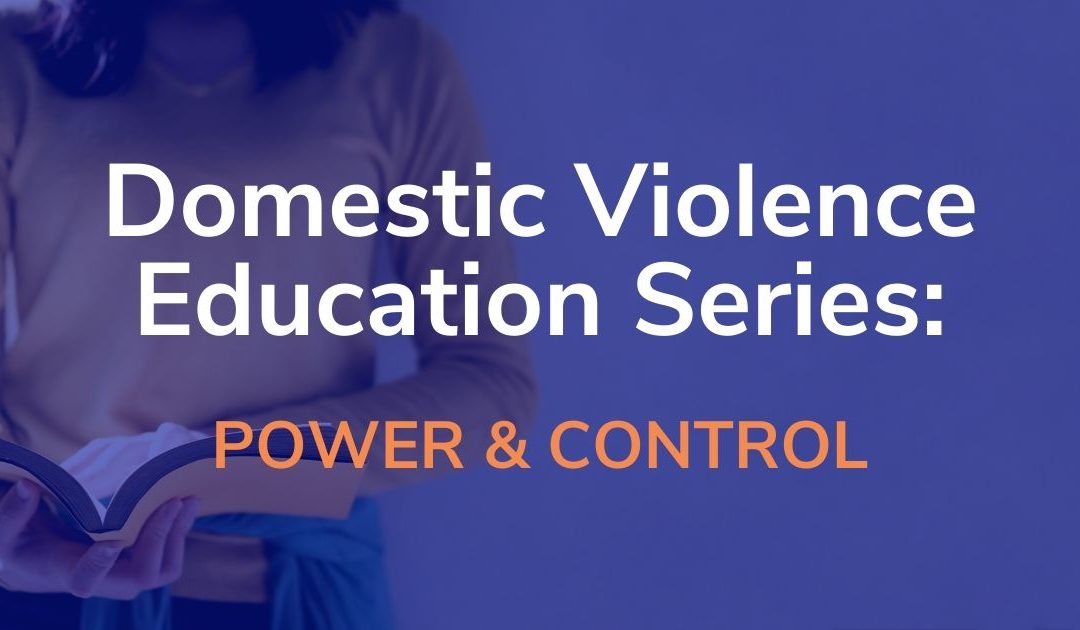Domestic Violence Education Series:
Power and Control
Domestic Violence Case Management Team
Domestic Violence is a pattern of abusive behavior in any relationship that is used by one person to gain or maintain power and control over another intimate partner. Domestic violence can be physical, emotional, economic, sexual, or psychological actions or threats that influence another person. This includes any behaviors that intimidate, manipulate, humiliate, isolate, terrorize, coerce, threaten, blame, hurt, or injure someone.
Domestic violence is not simply two people who physically hurt one another because they cannot control their tempers during arguments. Domestic violence is rooted in the need of one partner to seek or maintain power and control over their intimate partner. Batterers believe they are entitled to control their partners. They believe threats and violence are acceptable means to produce the results they desire.
The perpetrator’s pattern of abusive acts is used to gain compliance from their partner. Tactics that work to control a survivor are selectively chosen by the perpetrator. A perpetrator may use various types of violence to gain or maintain power over their partner. Their need for power and control is what motivates their decisions, as they hope to one day feel in complete control. Survivors will often attempt to comply with their partner in an attempt to end or subside the violence. However, it is impossible for the perpetrator to feel fulfilled in their need for power and control.
The Domestic Abuse Intervention Project in Duluth, Minnesota developed the Power and Control Wheel, a diagram which illustrates the tactics an abuser may use on their partner. The diagram represents the core root of domestic violence – a need for power and control over one’s partner. It also depicts the constant threat of physical or sexual violence a survivor is subjected to. The different spokes of the wheel explain various tactics perpetrators of violence use as a way of exerting power and control over their partner. Below, we will dig deeper into each layer of the wheel.
CLICK HERE TO VIEW THE POWER & CONTROL WHEEL.
Intimidation. Perpetrators may use intimidation as a means to gain or maintain power and control over their partner. Examples of this may include using violent physical gestures, threatening looks, or aggressive communication.
Emotional Abuse. By calling their partner bad names, insulting their partner’s intelligence, or intentionally humiliating their partner, a perpetrator can undermine a survivor’s sense of self-worth. Perpetrators feel they have more power over a relationship when their partner has low self-esteem, because they see themselves as the best option their partner has.
Isolation. Isolation can be physical or emotional. Physical isolation may occur when a perpetrator and survivor move to a secluded area, where it’s difficult to maintain or create new interpersonal relationships due to the geographical space between the two. Emotional isolation may occur when a perpetrator intentionally undermines a survivor’s relationships with friends and family. When a survivor lacks strong interpersonal relationships, it’s difficult to imagine a world separate from their closest friend, their abuser.
Minimize, Deny, and Blame. This spoke of the wheel examines a perpetrator’s use of minimizing the abuse, denying the abuse, or blaming the abuse on the survivor as a means of gaining or maintaining control. This includes when one refuses to acknowledge they have been abusive, minimizes the abuse, or characterizes the abuse as a consequence of a survivor’s actions. By doing these things, perpetrators can gaslight their partners, which gives them power over their partners.
Children. Perpetrators often use children as a way to gain power over their partner through manipulation or coercion. Oftentimes, survivors will stay in abusive relationships because they believe it is the only way to protect their children from the violence they know their partner is capable of.
Privilege. Privilege can play a major factor in abusive relationships. For some, privilege projects itself in the idea of strict gender roles. For those who identify as LGBTQ+, a partner may threaten to disclose their partner’s sexuality when the survivor hasn’t done so themselves yet. With this power imbalance, perpetrators maintain their control in a relationship.
Financial Abuse. The basics of this tactic lies in the perpetrator having most control of most, if not all, of the family finances. For some survivors, this means they are unable to obtain jobs as a way of securing financial independence. For others, it means their entire paychecks go to bills and providing for the family, leaving little to save in case of emergency.
Threats and Coercions. Perpetrators often use threats as a means to gain control over their partner. This includes threatening physical violence, financial ruin, or destruction of familial relationships. It may also mean convincing or coercing survivors to do as the perpetrator wishes so as to avoid injury.
If you or someone you know is experiencing intimate partner violence, you are not alone. Resilience is here for you. Give us a call or send us an e-mail:
24-Hour Help Line: 1-800-848-5991
Hablamos Español: 1-866-728-2131
Safe E-mail: GinnyP411@gmail.com
